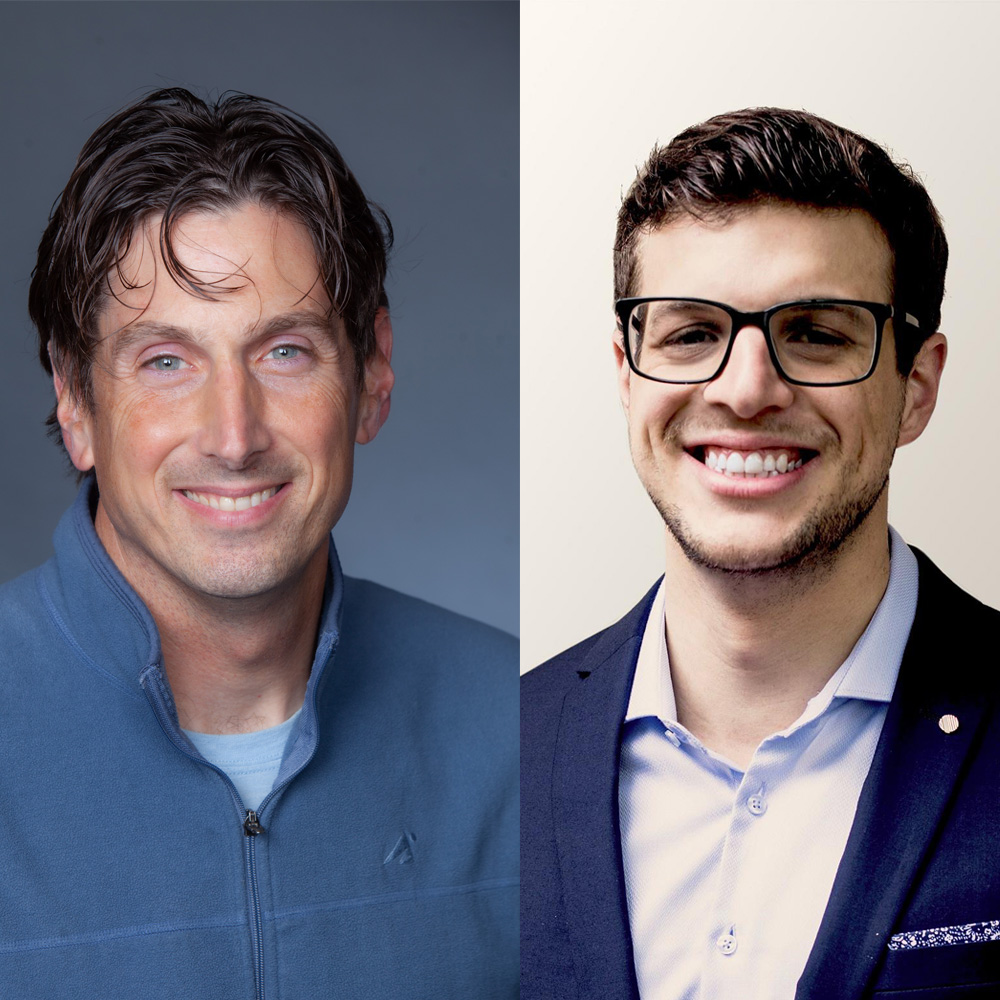06.02.2023
By uscbknpt
Taking on Chronic Pain Together

Australian researcher Rocco Cavaleri’s 2024 arrival as a Fulbright Postdoctoral Scholar at USC opens the door to increased collaboration on chronic pain research and interventions between two innovative international labs.
BY DANIEL P. SMITH
AFTER NUMEROUS YEARS OF FOLLOWING THE CUTTING-EDGE RESEARCH of Associate Professor Jason Kutch and his team at USC’s Applied Movement and Pain Laboratory (AMPL), Rocco Cavaleri will be joining the USC Division of Biokinesiology and Physical Therapy-housed AMPL as a Fulbright Postdoctoral Scholar in 2024.
It’s a potentially powerful synergistic arrangement that both Kutch and Cavaleri hope generates new knowledge and deeper research collaborations to advance care for individuals suffering from chronic musculoskeletal pain.
“The magic will be if we can come up with a more seamless, more immediate way to manage chronic pain flare-ups that can be so mentally and physically debilitating,” Kutch says.
Different perspectives, same goal
Cavaleri currently leads the Brain Stimulation and Rehabilitation Lab at Western Sydney University in Australia, where he investigates the role of noninvasive brain stimulation in the treatment — or even prevention — of chronic pain. That work aligns neatly with the AMPL’s innovative work employing neuroimaging techniques and pain-reducing measures through noninvasive techniques such as transcranial magnetic stimulation (TMS) to augment chronic pain treatment.
During his 4- to 6-month stay at USC as a Fulbright Scholar, Cavaleri will team up with Kutch and AMPL researchers to test people undergoing acute flare-ups of pain and assessing the ability of noninvasive brain stimulation to expedite recovery and prevent pain persistence or chronicity.
A bioengineer and mathematician in addition to being a pain researcher, Kutch’s statistical expertise will also help drive predictions and models based upon brain activity.
“We’re two worlds that approach chronic pain in different ways but with a lot to learn from one another,” Kutch says.
While the researchers might possess distinct perspectives on pain science, Cavaleri and Kutch both share an earnest commitment to addressing a problem that taxes individuals, hampers quality of life and poses a significant economic expense, especially given chronic pain management’s role in fueling opioid use and its associated conditions. The total cost of treating chronic musculoskeletal conditions in the United States alone is estimated to exceed $500 billion each year.
“It’s staggering, and everybody knows someone with chronic pain,” says Cavaleri, who worked as a physiotherapist before completing his PhD.
In fact, Cavaleri recounts his own story of an uncle who passed away from a prescription opioid overdose attributed to the mismanagement of his chronic back pain.
“I can’t really even say ‘mismanagement’ though. It was more the available management and people trying their absolute best at the time,” Cavaleri says.
Despite the National Institutes of Health calling for more sustained investment in chronic musculoskeletal pain research a decade ago, relatively few gains have been made in the treatment of chronic pain. That reality heightens the need for solutions, especially as some predict chronic pain rates to increase more than 40 percent over the next two decades.
“We just haven’t been able to crack the code for chronic pain,” Cavaleri says. “Yet, we have this very real potential to transform the way we think about and treat chronic pain.”
Igniting a richer international collaboration
Though Cavaleri’s brief visit to USC will likely only “scratch the surface of what’s possible” on the research side, Cavaleri and Kutch hope it ignites an ongoing collaboration between USC and Western Sydney University leading to comfortable, safe and non-pharmacological treatments of chronic pain as a replacement to painkillers and current treatment modalities producing limited success.
“It’s these concerted and ongoing efforts across institutions and nations that is really required to see rates of chronic pain decrease over time,” Cavaleri says.
Kutch echoes that sentiment, hoping Cavaleri’s time at USC provides a reciprocal exchange of ideas that elevates everyone’s work.
“I know I’m hoping [Cavaleri’s visit] rounds out the different ways we study pain and conceptualize of strategies to reduce pain in noninvasive ways,” Kutch says.
Calling chronic pain “a worldwide problem requiring worldwide solutions,” Cavaleri says he is looking forward to his arrival at USC early next year and working alongside Kutch and AMPL researchers to begin unlocking novel treatments that will uplift lives.
“This is such a fantastic program because it breaks down barriers and facilitates the exchange of ideas and knowledge between sites across the globe,” Cavaleri says of the Fulbright Scholarship. “Ultimately, this will lead to better research and, hopefully, some really interesting and innovative solutions.”
And, if the researchers can unlock successful interventions, they foresee a substantial socio-economic benefit and, more importantly, a path to reducing the profound physical and psychological consequences associated with chronic pain.
“It, quite literally, could change the lives of millions of people worldwide,” Cavaleri says.

